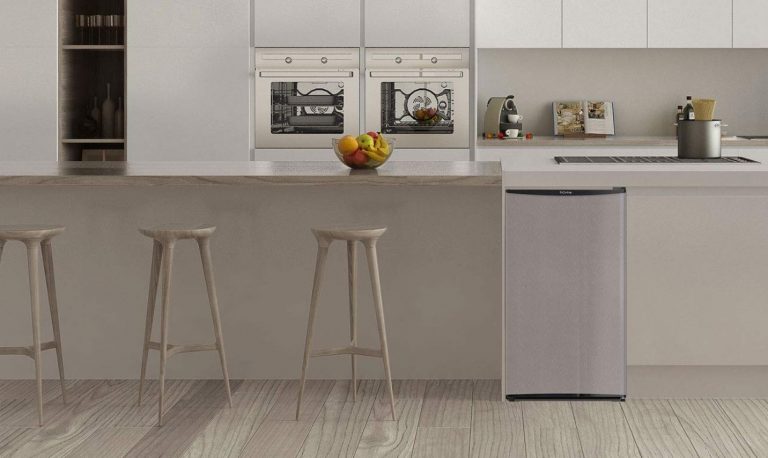Why is the freezer area of a refrigerator is colder than the rest of the refrigerator?
It’s probably baffled many curious minds out there, but why is it that the refrigerator’s freezer area is cooler than the fridge? Why is it that the freezer frosts and forms ice crystals while the rest just stays cool?
To effectively answer this question, we need to deep dive into a refrigerator’s inner mechanisms, how it works, and why it works.
Freezer vs refrigerator temperature
Are you wondering what the difference is between freezer and refrigerator temperatures? Well, the main difference is in the temperature range.
A refrigerator is designed to keep perishable foods at a safe temperature between 33 to 40 degrees Fahrenheit. This temperature range is ideal for storing most fruits, vegetables, meat, dairy, and other perishable foods.
A freezer, on the other hand, is designed to keep food at a temperature of 0 degrees Fahrenheit or below. This temperature range is ideal for storing frozen foods, such as meats, vegetables, and ice cream. Freezing food at this temperature can help to preserve the food for longer periods of time.
It’s important to set your refrigerator and freezer temperatures to the right levels to ensure that your food stays fresh and safe to eat.
Another important difference is that refrigerator temperatures fluctuates more often than freezer temperatures. This is due to the door opening and closing and the compressor turning on and off. This fluctuation can cause the food to spoil faster.
So, it’s important to check the temperature regularly and make adjustments if necessary. A thermometer is a useful tool to have in your refrigerator or freezer, to check the temperature easily.
By understanding the difference between freezer and refrigerator temperatures and keeping them at the right levels, you’ll be able to prolong the life of your food and save money on your food bill.
How does a refrigerator work?
The fridge and the freezer are not separated from each other. They are continuous components that are connected by pipes and vents.
This is why when you slam the fridge door, the freezer door partially opens. Some air gets to the pipes and flows upwards to the vents, causing the freezer door to open.
The main principle that the whole refrigerator unit operates on is removing hot air to cool the system. This is done through a process called the refrigeration cycle. Five main components make this possible.
- Expansion device
- Evaporator coils
- Condenser coils
- Compressor coils
- Refrigerant
These are the steps to the refrigeration cycle
- The refrigerant enters the expansion device. Because of the high pressure, it expands, cools down, and turns into a gas.
- The evaporator coils then evaporate and circulate the liquid refrigerant as gas to absorb all the refrigeration unit heat.
- After absorbing the heat, the refrigerant is then compressed in the compressor. This raises the temperature and pressure.
- The refrigerant finally reaches the condenser coils at the back of the refrigerator. This is where the heat that is absorbed inside of the system is released. This explains why the back of your refrigerator is hot.
Why is the freezer colder than the rest of the refrigerator?
The whole refrigeration process mainly takes place in the freezer. To put it simply, the cold air “originates” in the freezer. It is the leading site of heat absorption, which causes it to cool down.
The evaporator fan then blows this cold air upwards to the freezer’s back and the whole unit’s top. This air reaches the unit’s refrigerator part via the ducts and vents that connect the two compartments.
In specific, three vents connect the two components. The two vents circulate back the air to the freezer, and only one goes directly to the fridge.
A damper is also in charge of directing and controlling the air that reaches the refrigerator.
In essence, the freezer is colder than the rest of the refrigerator because the cold air originates in the freezer, and only a fraction of the air reaches the fridge.
Air is expanded more in the freezer, which causes it to cool, and this process doesn’t take place in the fridge, but more so, the fridge only shares a part of the air that comes from the fridge.
Does a freezer cool faster than a fridge
In short, yes. A freezer is designed to cool at a faster rate than a refrigerator. This is because a freezer’s temperature range is set at a much lower level than a refrigerator’s. The lower temperature means that the freezer can quickly drop the temperature of the food inside it, preserving it and keeping it frozen.
A refrigerator, on the other hand, is designed to keep food at a slightly warmer temperature, between 33 and 40 degrees Fahrenheit. This temperature range is ideal for preserving perishable items such as fruits, vegetables, and meats, but it does not have the same cooling power as a freezer.
It’s important to remember that the faster a freezer can cool, the faster it can freeze the food, which can help to preserve the food for longer periods of time.
A freezer is also designed to have a more powerful compressor, a thicker insulation and more powerful fans to cool the interior faster than a refrigerator.
It’s important to note that a freezer compartment within a refrigerator will not cool as fast as a standalone freezer. A freezer compartment is designed to be used in conjunction with the refrigerator and not as a replacement.
By understanding the difference in cooling power between a freezer and a refrigerator, one can make a better decision on how to properly store and preserve their food.
How does cold air get from freezer to fridge
Cold air is circulated from the freezer to the refrigerator through a system of coils and fans. The freezer’s compressor pumps refrigerant through a set of coils, which absorb heat from the air inside the freezer.
The cooled refrigerant then travels through a set of coils in the refrigerator, where it releases the cold air into the refrigerator compartment. This process, called the refrigeration cycle, is aided by fans that circulate the cold air throughout the refrigerator and freezer compartments.
The temperature control system in the refrigerator regulates the flow of cold air, keeping the temperature in both compartments at the desired level.
Related: The best freezer-less fridges.






